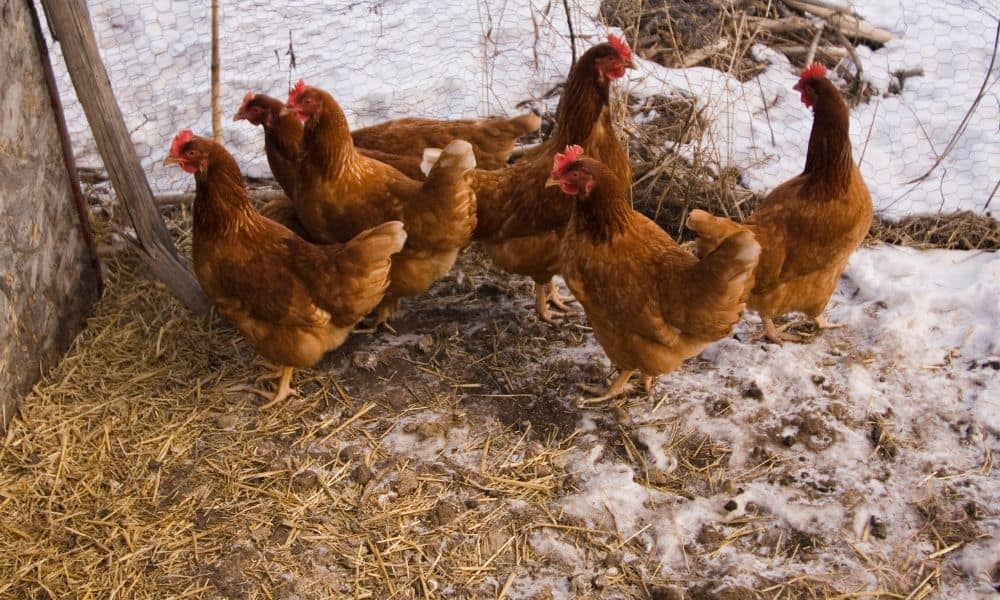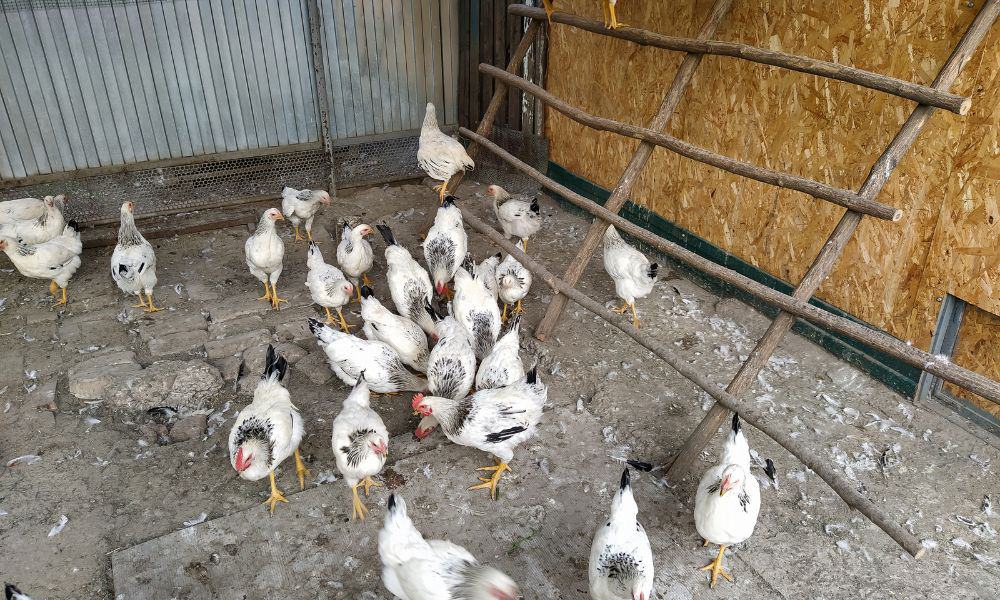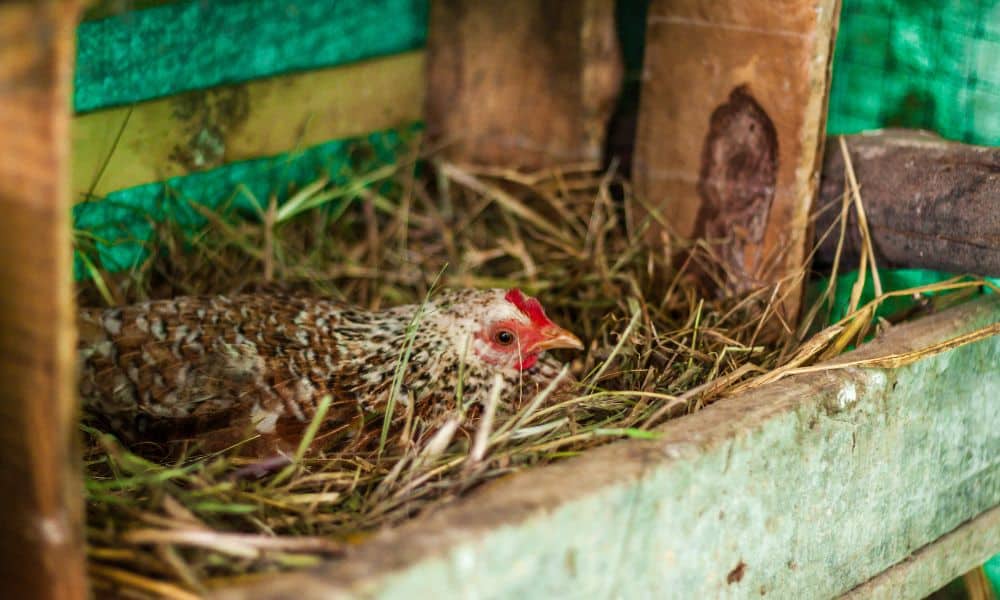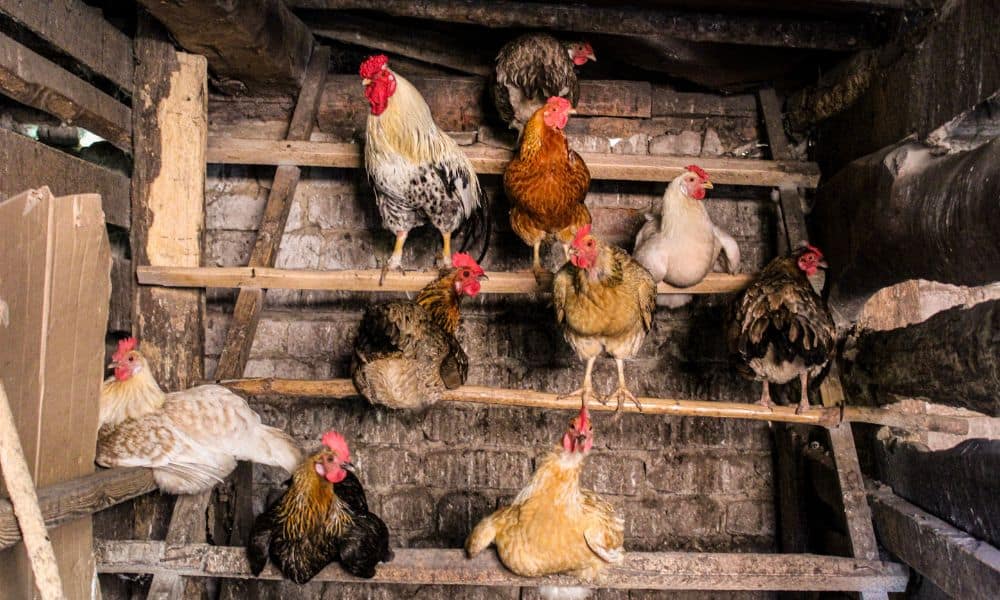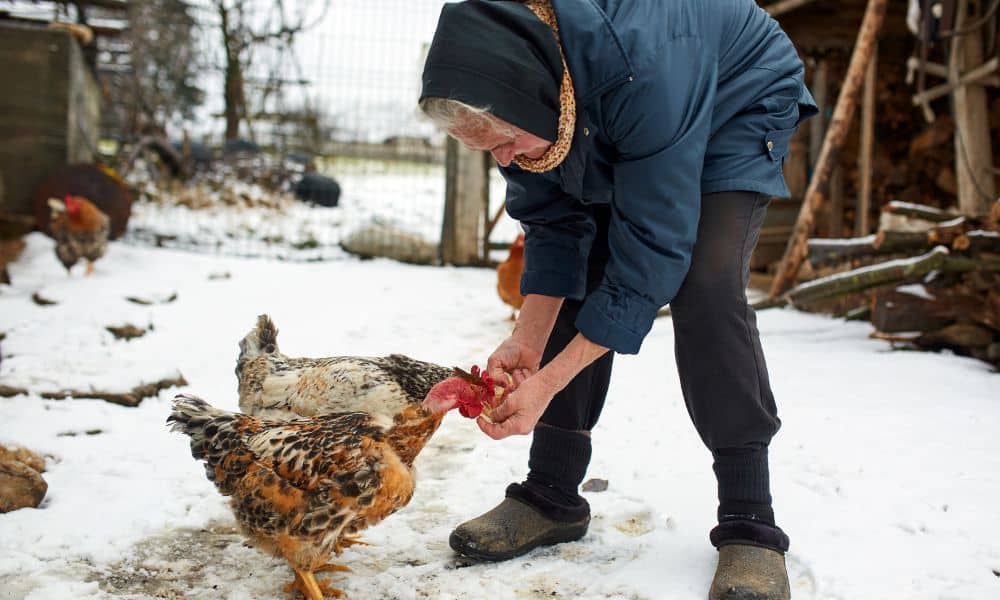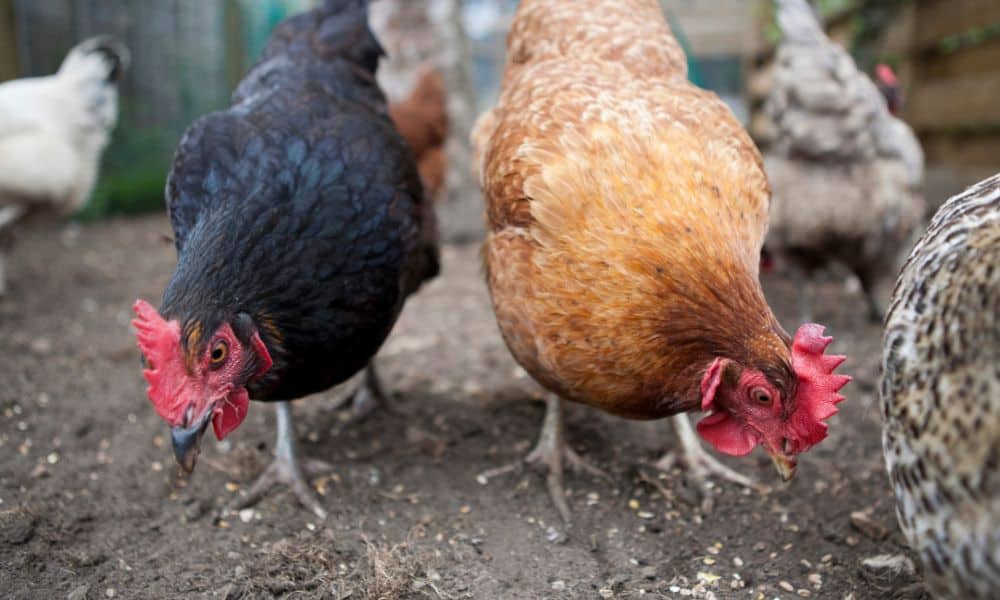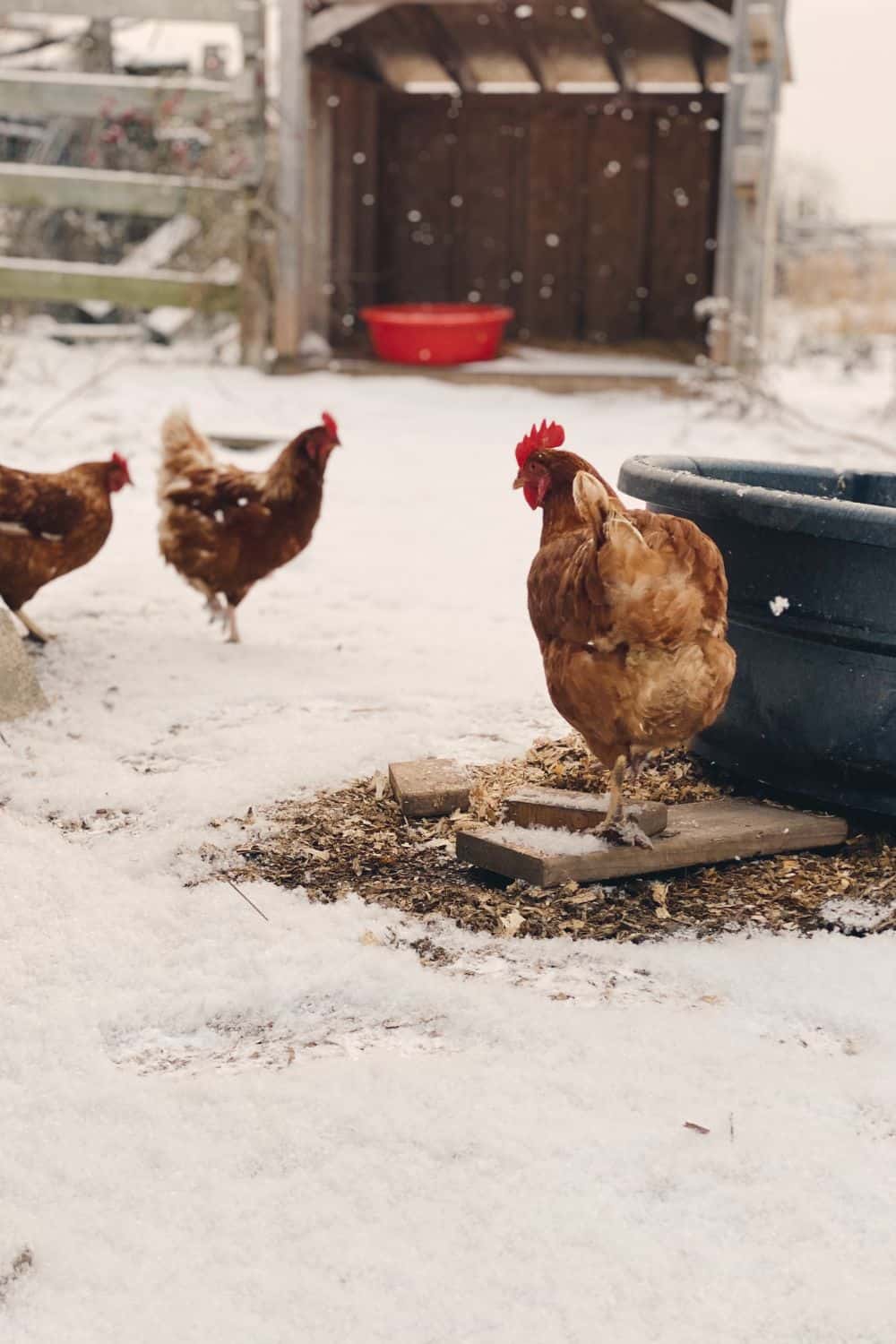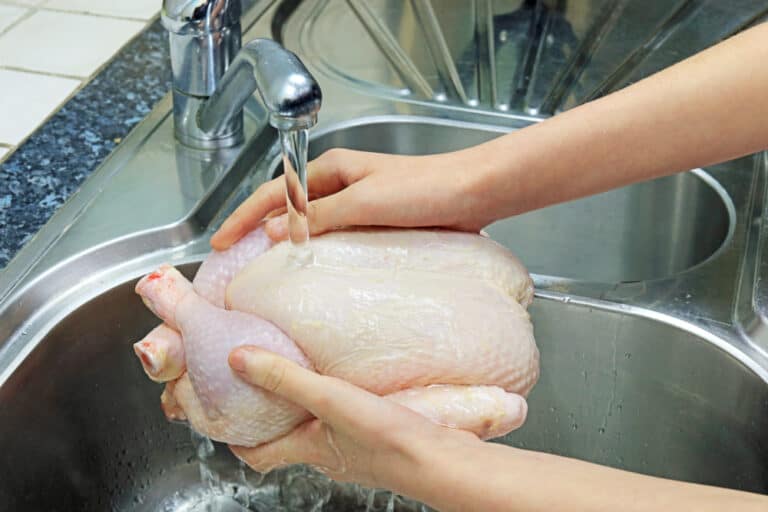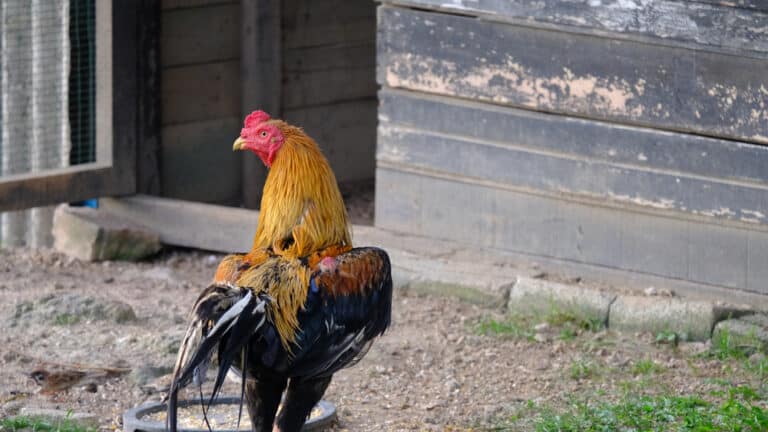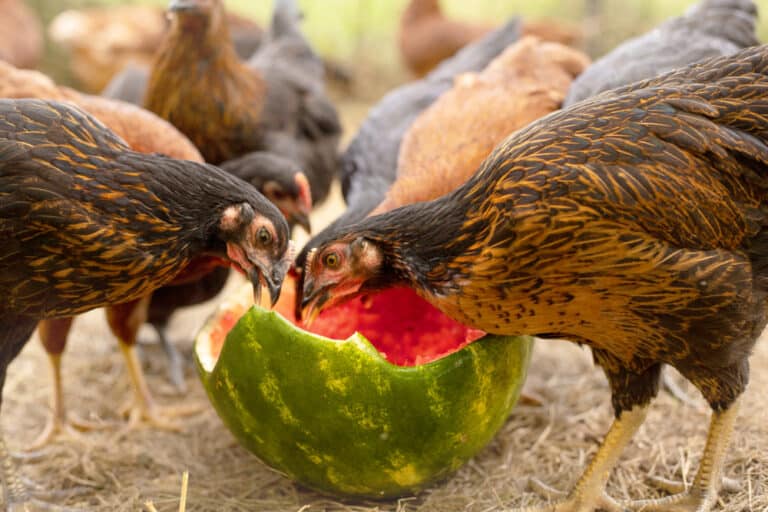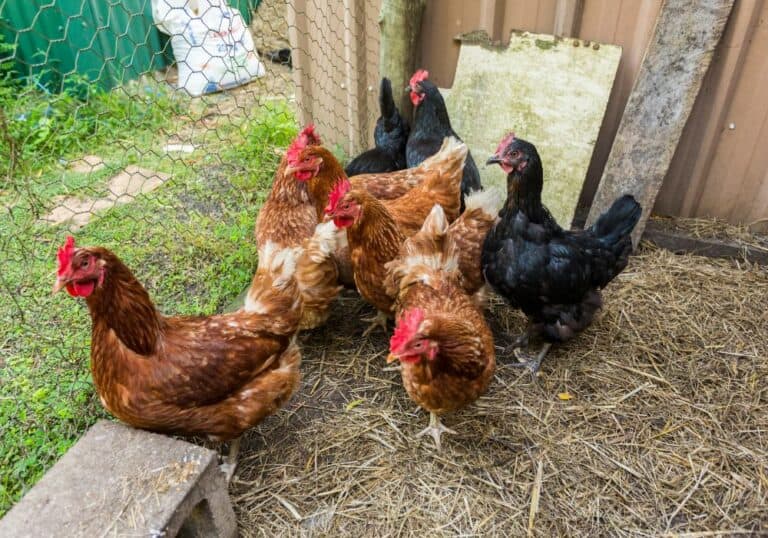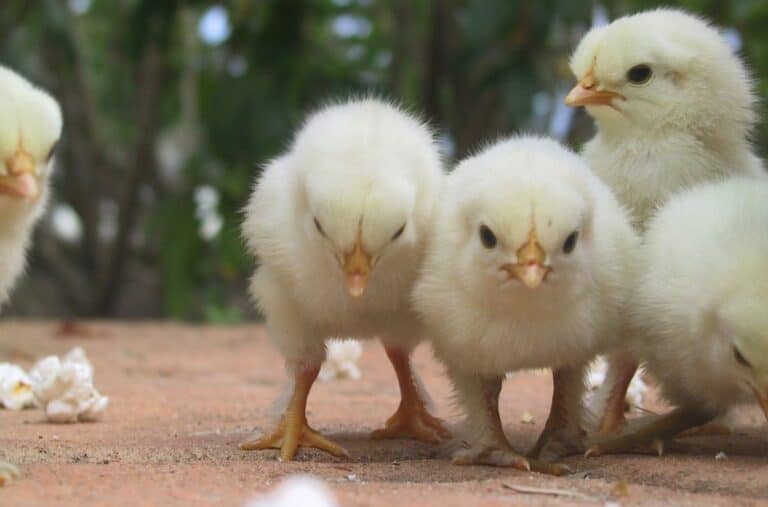Chickens are remarkably hardy birds, despite their tropical heritage, and most breeds can withstand surprisingly cold temperatures without any adverse effects.
However, when the winter months arrive, there are certain precautions you still need to make to keep your birds happy and healthy – and to give you all the info you need, in this post, we look at the question, how cold is too cold for chickens?
How Cold is Too Cold for Chickens? Chickens and temperature
Let’s start by talking a bit about how chickens fare in various temperatures.
Chickens are hardy creatures that can survive in a broad range of temperatures, but the optimal temperature for them to thrive and be productive is in the 60-75°F range.
That said, they can still do well in temperatures outside this range, although extremes of hot or cold will cause them stress, reduce egg production – and sometimes even kill them.
Although chickens are descended from red junglefowl, a species that originated in the jungles of Thailand, modern domestic chickens can do well even in low temperatures.
This is partly due to their high metabolism, which enables them to produce enough heat to survive in temperatures as low as freezing, and their feathers also do a good job of insulating their bodies.
However, when temperatures drop this low, they can be at risk of frostbite – especially in the most sensitive areas such as the feet, comb and wattles.
When winter arrives, chickens can still go outside to forage as normal, but the key to keeping them healthy is providing a warm coop to which they can retreat when they feel too cold.
With a properly prepared coop, chickens can easily survive in temperatures below freezing – although, of course, if you just leave them outside in temperatures this low, they will quickly freeze to death.
The most important question, then, is not about what temperatures chickens can survive in but what you can do to prepare your coop for winter to keep them warm – so let’s look at this now.
Preparing the coop for winter and keeping your chickens healthy
There are several actions you need to take to prepare your coop for winter, and there are some other things you should also do once winter arrives to keep your chickens warm and healthy. Here are the most important ones to remember.
1. Drafts
If your chickens live in a drafty coop, they will suffer from the cold much more, so it’s vital to prevent any cold winds from blowing through any gaps.
This means before winter arrives, you need to check the coop thoroughly to identify any gaps, cracks or holes and block them up.
This will prevent your chickens from suffering from the effects of windchill.
2. Insulation
In colder regions, you can also consider insulating the walls of your coop for winter.
If you trap the heat produced by chickens’ bodies in the coop by blocking up all gaps and insulating the walls, the temperature inside will be at least several degrees higher than outside, keeping the birds more comfortable.
3. Ventilation

An important aspect – and one that might at first seem counterintuitive – is making sure the coop is also properly ventilated.
This is because chickens in their coop produce lots of moisture – through breathing and defecation – and this will be even more so in winter since chickens are likely to spend more time inside the coop when the weather is cold.
Excess moisture can make the chickens feel colder, and in winter, moisture in the air can also turn to condensation, increasing the risk of frostbite when inside.
This means you need to ensure your coop has proper ventilation to allow the moisture to escape – while also ensuring the ventilation points don’t allow cold air to blow into the coop.
One way to do this is to install ventilation in the roof of the coop to allow moisture to be released without cold air blowing in.
You can also fit burlap coverings over the ventilation points to allow moisture to be released while keeping cold air from entering.
4. Bedding
Adding lots of extra bedding for your chickens can also help keep them warm – giving them plenty of hay will help trap warm air in the coop, keeping them warm more effectively.
You should also make sure you clean the coop regularly to remove any chicken poop that might add to the moisture levels in the air.
An alternative strategy is to use the deep bedding method and to regularly stir the bedding throughout the winter.
This way, the chicken poop will drop to the bottom, and through the natural decomposition process, it will become an additional source of heat.
However, if you opt to try this, the coop will require a deep clean when spring arrives and the weather starts to warm up.
5. Raised roosting perches
Although you should do this anyway, it’s important to provide chickens with raised roosting perches for winter and to make sure they’re made of the correct materials.
Avoid using materials like metal or plastic that retain the cold – at best, they will be uncomfortable for the chickens to roost on and at worst, they put your birds’ feet at risk of frostbite.
If the chickens are all able to roost on raised perches, their combined body heat will also warm upper part of the coop, helping to keep the cold at bay.
6. Food and water
Throughout the winter, you should also make sure your chickens are properly fed and watered.
Providing around an extra 25% of feed will ensure the chickens have enough calories to produce the body heat they need to survive the colder weather.
Water is a problem because you have to make sure it doesn’t freeze – and there are several techniques you can try.
Either you can simply change the bowls more often to ensure the water doesn’t have time to freeze or you can use heated bowls that keep the water above freezing point.
Whichever method you opt for, it’s important to keep your chickens watered or they won’t eat either. This will cause them to lose body weight, leaving them less able to deal with the cold.
7. Keep them active
Make sure you keep your chickens active in winter by giving them plenty to do. For example, spread their grain feed over the ground to encourage foraging behavior rather than allowing them to access it from a feeder.
8. Apply Vaseline to combs and wattles
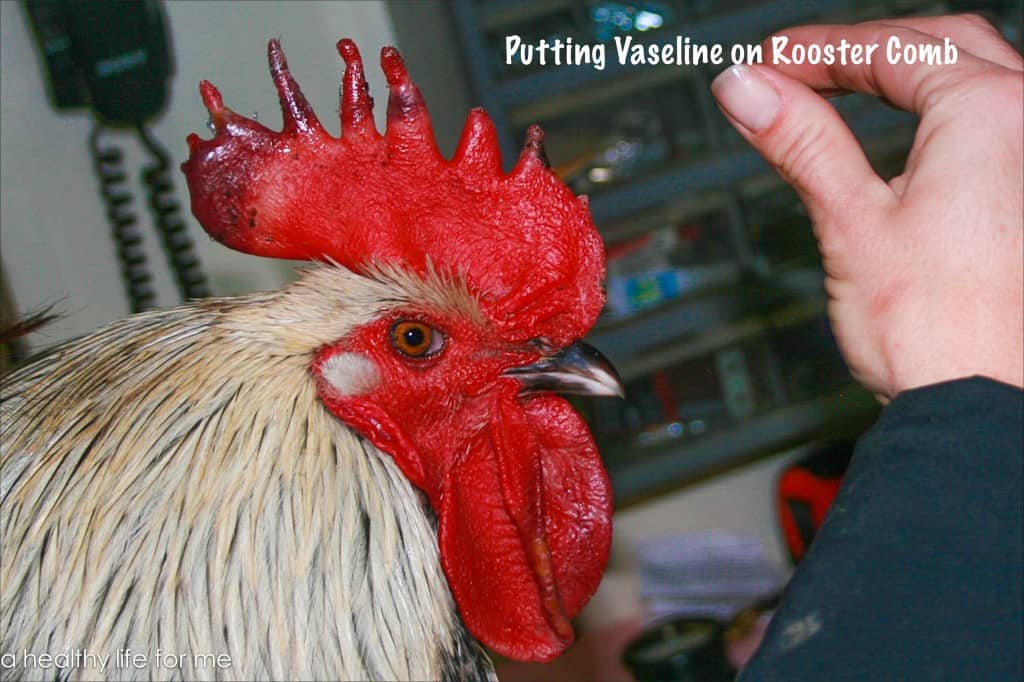
Applying Vaseline to combs and wattles will help protect these sensitive parts against frostbite.
To heat or not to heat?
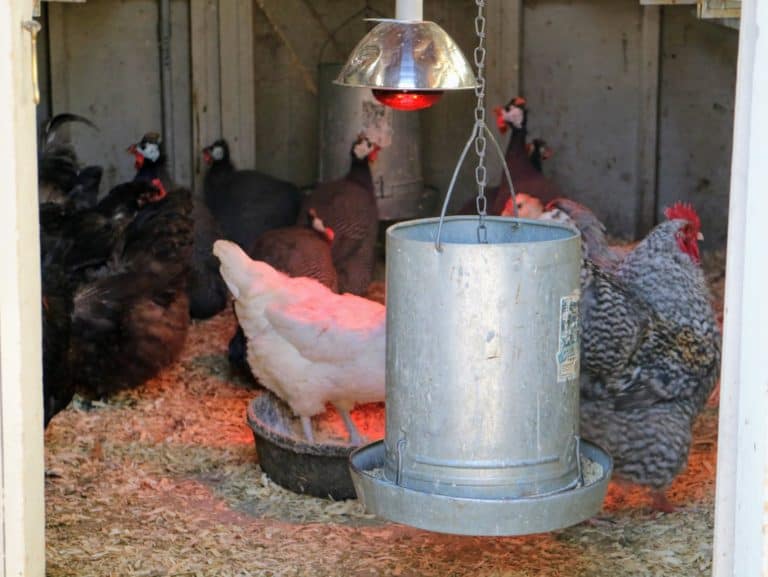
One big question chicken keepers have to face in colder regions is whether or not to heat the coop.
In the coldest climates, adding a heating system to the coop will ensure the chickens don’t freeze, but there are several disadvantages.
First, heaters are a potential fire risk, so you need to make sure the system is properly installed.
Also, if you add a heater to the coop, it will mean your chickens are less able to acclimatize to the cold, which means they will be more reluctant to go outside.
On the other hand, if you live in a particularly cold region where temperatures drop significantly below freezing in winter, a heating system may be necessary to keep your flock alive.
How to tell if chickens are too cold
During winter, you should keep a close eye on your chickens and check them regularly to see if they are suffering too much from the cold.
If they continue to behave normally, they are probably fine – but if they start huddling together instead of foraging individually, it’s a sign that they are uncomfortable.
Furthermore, you should pay close attention to their combs and wattles – these parts are most at risk of frostbite, which can set in after just ten minutes of exposure to cold temperatures.
Tips
To finish, here are a couple of extra tips for getting your flock safely through the winter months.
-
Choose winter-hardy breeds in cold regions
If you live in an area with particularly cold winters, choose large, cold-hardy breeds rather than slighter, more cold-susceptible ones.
-
Observe chicken behavior before winter
Observe your chickens before winter arrives to see if they are displaying any bullying behavior.
If you have a mixed flock, and the larger birds are bullying the smaller ones by not allowing them access to food and water, you should separate them before winter arrives.
Otherwise, this behavior will prevent the smaller birds from eating and drinking at the most critical time, and they may not survive.
-
Collect eggs early
If you are lucky enough for your hens to lay eggs during winter, collect them as early as possible to prevent them from freezing.
Proper preparation will help keep your birds in good health
Chickens can survive in low temperatures, and by preparing your coop for the winter and ensuring your birds are properly fed and watered, you can help them make it through the winter with no problems.
Then, as long as you keep a close eye on them to make sure they aren’t suffering too much from the cold, they will all be happy and ready to start laying again as soon as the warmer weather arrives the following spring.

